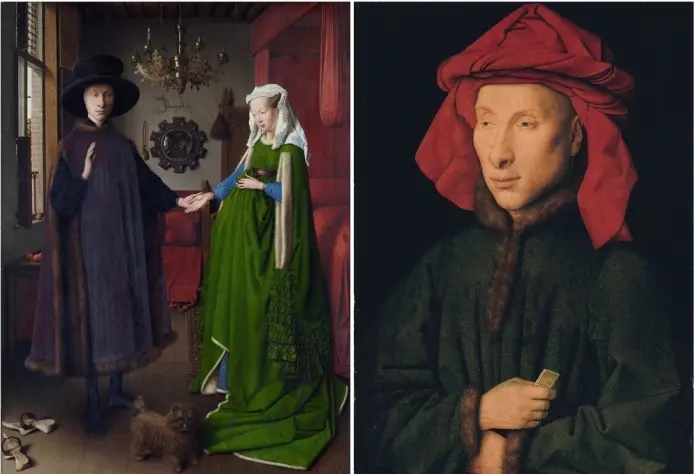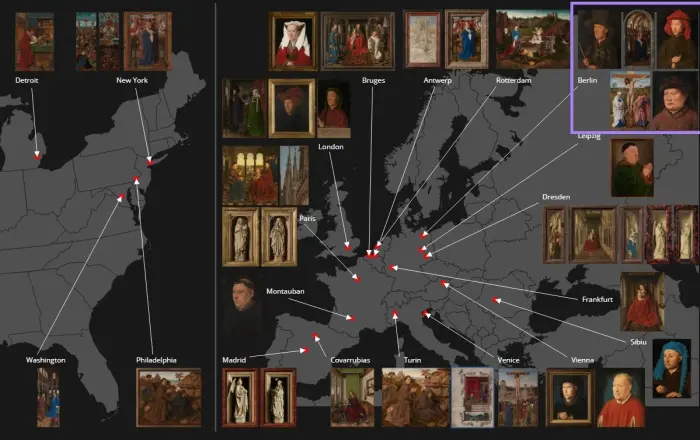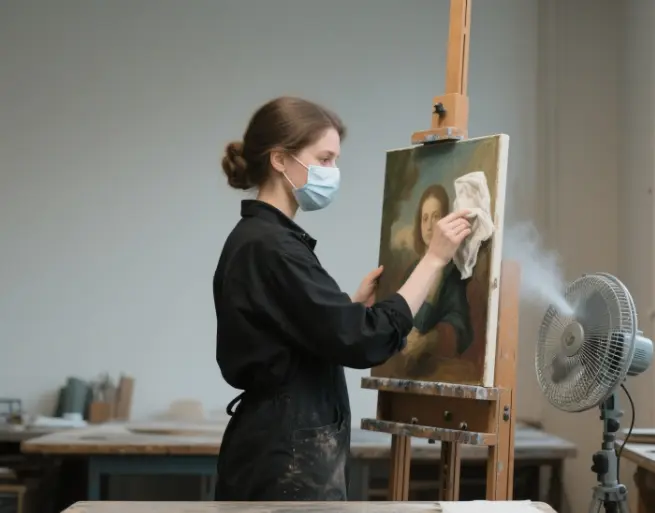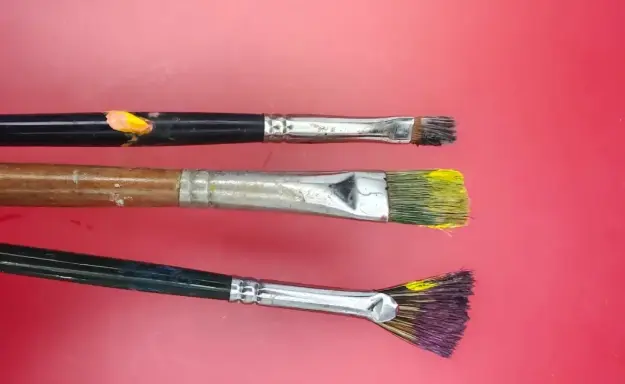As an important art form, the origin and early development of oil painting has always been an important topic in art historical research. For a long time, Western art historians have generally regarded the Netherlandish painter Jan van Eyck as the “Father of Oil Painting”, and he is considered to be the inventor of the oil painting technique. However, recent archaeological discoveries and scientific research have shown that the origins of the technique may be much older than van Eyck’s time, and that the path of its dissemination is much more complex than traditionally recognized. In this paper, we will explore the question of “who is the father of oil painting” from multiple perspectives, and sort out the origins, development, and spread of oil painting technology, with a view to providing a more comprehensive understanding of this important topic in art history.
Bamiyan murals: the earliest practice of the oil painting technique
Archaeological Discoveries in Bamiyan, Afghanistan
In 2008, a team of Japanese, European and American scientists discovered the oldest oil paintings known to mankind in the caves of the Bamiyan Valley in Afghanistan. This significant discovery overturned the previous consensus on the origins of oil painting and pushed the emergence of the technique forward by about 600 years.
The Bamiyan site is located in the Bamiyan Valley, a famous “cultural mecca” in Afghanistan and an important node on the ancient Silk Road. The area was once a center of Buddhist culture, with about 700 caves, of which about 50 are preserved with wall paintings. By chemically analyzing the composition of the mural paints in the 50 caves at the site, the research team found that paints very close to walnut or pecan oil were used in 12 of the cave murals.
Dating and Technical Characteristics of Bamiyan Frescoes
The Bamiyan frescoes date from the 7th to the 10th centuries A.D., with the main focus on the period from the beginning of the 5th century to the end of the 9th century. Among them, the frescoes in Cave N(a) can be dated to the middle of the 7th century, using horse glue as a base and drying oils (walnut, sesame, or perilla oil) as a bonding medium.
Jan van Eyck and the Development of Oil Painting in Europe
Jan van Eyck’s Life and Artistic Achievements
Jan van Eyck (1385-1441) was a Netherlandish painter and one of the greatest painters of the Early Netherlandish School, considered the founder of 15th-century post-Gothic painting in northern Europe and one of the founders of Netherlandish Renaissance art.
Known for his rigorously realistic portraits, van Eyck was one of the first Flanders artists to begin signing his works. His paintings summarize the development of Netherlandish painting up to the 15th century, while at the same time opening the way to the Netherlandish Renaissance. His work in the first half of the 15th century represented human life and portrayed characters from a new humanist perspective.
Jan van Eyck’s contribution to the technique of oil painting
Jan van Eyck is considered to be an innovator in oil painting techniques, improving painting techniques and inventing oil paints, which were made from oil to be applied to the canvas board, resulting in paintings with more vibrant and long-lasting colors.
Van Eyck mastered the use of pigments and mastered the qualities of vegetable oils to create a naturalistic depiction of reality. He is regarded as the “Father of Oil Painting” for his unique contribution to the development of the art of oil painting.
Van Eyck’s innovative development in the use of oil painting brought his skills to a higher level, and his influence was far-reaching, with his techniques and style being adopted and refined by the early Dutch painters. His masterpiece, Portrait of Mr. and Mrs. Arnolfini, is an important work in the history of oil painting.
Jan van Eyck and the Ghent Altarpiece
The Ghent Altarpiece, recognized worldwide as the first true oil painting, was completed by the van Eyck brothers in 1432. Prior to this, the main forms of painting in Europe were wet frescoes and tempera paintings.
The creation of the Ghent Altarpiece is considered to be a major breakthrough in oil painting technique, demonstrating van Eyck’s skillful mastery and innovation in the medium. This work is not only technically significant, but also opened up new possibilities in artistic expression, providing inspiration and reference for later artists.

The Diffusion and Evolution of Oil Painting Techniques
The Path of Diffusion from Bamiyan to Europe
Although the discovery of the Bamiyan frescoes suggests that the oil painting technique existed as early as the 7th century, how the technique spread from Asia to Europe is still a question that needs to be further investigated. The Silk Road, as an important trade and cultural exchange route connecting East and West, may have been an important medium for the spread of the oil painting technique.
The Silk Road is a major artery for economic and cultural exchanges between Asia, Europe and Africa. During the time-honored course of Sino-Western interactions, Chinese tea, porcelain and the Four Great Inventions spread to Europe, bringing influence to the Western society at that time. This route may also have provided the possibility for the spread of oil painting techniques.
Central Asia, located in the center of the Eurasian continent, was once the core node of the overland Silk Road and is today one of the key areas of the Belt and Road Initiative. This region may have been an important transit point for oil painting techniques from the Middle East to Europe.
The development of oil painting techniques in Europe
During the time of Jan van Eyck, oil painting techniques developed rapidly and were widely adopted in Europe. After van Eyck, oil painting became the main form of painting in Europe, replacing the previous wet frescoes and tempera paintings.
At the beginning of the 15th century, Jan van Eyck, the most important representative of early Northern Renaissance art, expanded the possibilities of rendering the visible world in an unprecedented way, and was regarded as a great innovator in the art of painting while he was still alive, with far-reaching consequences in Europe.
During the Renaissance, oil painting techniques continued to be developed and refined. Artists such as Jan van Eyck are widely regarded as the founders of the oil painting technique, and their work demonstrated the unique advantages of the medium, such as the vibrancy, layering, and transparency of colors.

Who is the Father of Oil Painting?
The clash between traditional views and new discoveries
For a long time, Western art historians have generally recognized Jan van Eyck as the “Father of Oil Painting,” who is considered to be the inventor of the technique. This view is based on the traditional narrative of European art history, which closely links the development of oil painting techniques to the Netherlandish Renaissance.
However, archaeological discoveries and scientific analyses in Bamiyan, Afghanistan, in 2008 suggest that the origins of the oil painting technique may have been much earlier than the era in which van Eyck lived. This discovery turned the traditional art historical narrative on its head, pushing the emergence of the oil painting technique forward by some 600 years.
The discovery has also sparked scholarly debate on how to redefine the notion of “oil painting” and how to understand the independent development of oil painting techniques in different regions or their mutual influence.
Reassessment of the historical status of Jan van Eyck
Although the discovery of the Bamiyan frescoes suggests that the technique of oil painting existed before van Eyck, Jan van Eyck’s historical place in the development of European oil painting cannot be ignored. He is considered to be the first known painter to paint with oil paints, and it was from him that the technique of oil painting was used on a large scale.
Van Eyck’s innovation lies in his improvement and popularization of the oil painting technique, which led to the widespread acceptance and use of this medium throughout Europe. His work demonstrated the unique advantages of the oil painting technique and provided inspiration and reference for later artists.
The spread and evolution of oil painting techniques reflects the exchange and integration of different cultures. From the Bamiyan frescoes to the oil paintings of the European Renaissance, this art form has gone through many cultural transformations and technological innovations.
The Silk Road, as an important cultural route connecting East and West, may have played an important role in the spread of oil painting techniques. This route not only facilitated the exchange of goods, but also the exchange of art and technology.




